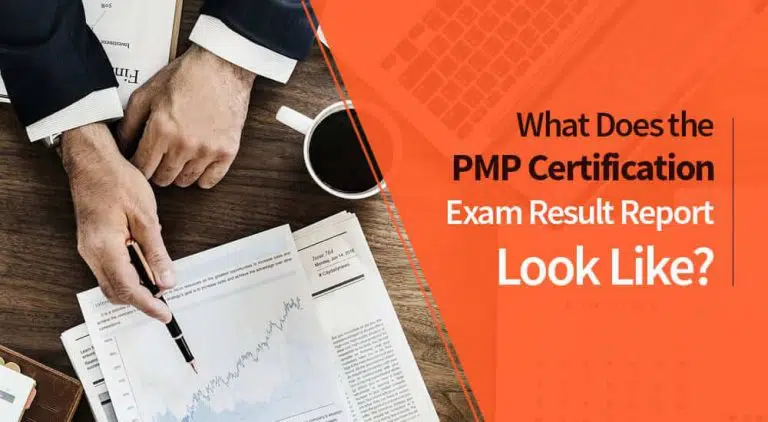Today, I will talk about the PMP exam structure.
The PMP certification is the most widely recognized in the arena of project management, and attaining it is the dream of project professionals. It validates your knowledge, skills, and capabilities in leading and directing projects.
You must go through a lengthy process to earn the title of Project Management Professional. The grand finale is a computer-based exam.
The test comprises five types of questions (multiple-choice, multiple responses, matching, hotspot, and limited fill-in-the-blank). A good understanding of the PMP exam structure will help you with your PMP Exam preparation.
What is the PMP Exam’s Structure?
The PMP exam questions are distributed throughout three domains:
- People
- Process
- Business Environment
The PMP exam is composed of 180 questions. Out of these, five are pretests that do not affect your score. However, they are random throughout the exam, and you cannot distinguish them from other scorable questions.
It would be smart to assume that all 180 questions are scorable. These pretest questions are just used to test the validity of future examinations.
The computer-based exam takes 230 minutes with two scheduled breaks of ten minutes. There are no scheduled breaks for paper-based exams.
Before your test begins, you will go through an awareness section. This session will explain how to navigate the exam: how to select and answer, how to mark a question for later review, etc. This lasts for 15 minutes.
As soon as you finish the awareness, your test will start. You cannot make any notes during the exam.
After submitting your answers, you have to complete a survey, and then you can see your results.
The awareness session and the survey are not part of your exam time.
The table below shows how the exam questions are distributed throughout each phase:

The above table is with reference to the latest PMP exam content outline, applicable from January 2, 2021.
You can estimate that:
- The People group will have 76 questions
- The Process group will have 90 questions
- The Business Environment group will have 14 questions.
Remember that questions based on Professional and Social Responsibility are distributed throughout these process groups. To the best of my knowledge, the exact number of questions has not been made public.
Tips for Attempting the Exam
Keep the following points in mind:
- You have to answer 180 questions in 230 minutes, which means 1.2 minutes for each question. Manage your time accordingly.
- Don’t waste time on tough questions. Leave them for later review.
- Since there is no negative marking, don’t leave any questions unanswered.
- Try to save 25 minutes at the end of your time to review the answers you marked for later.
Summary
The PMP exam has 180 questions, and you have to finish these questions in 230 minutes. If you are well prepared, this is long enough to answer all questions and pass the exam. Attempt them all and ensure that you have enough time for revision before hitting the submit answer button.
Good luck with your PMP exam.
This is where this post on the PMP exam structure ends. If you have any questions regarding the structure of the PMP exam, you can ask through the comments section, and I will reply.
The other posts are as follows:
- What is the PMP?
- What are the PMP Eligibility Requirements?
- What is the PMP Application Process?
- How Expensive is the PMP Certification?
- What is the PMP Exam Structure? (You are here)

I am Mohammad Fahad Usmani, B.E. PMP, PMI-RMP. I have been blogging on project management topics since 2011. To date, thousands of professionals have passed the PMP exam using my resources.








My girlfriends father will only let me marry her if I get the PMP in first attempt. I have been in project management for a cotton farmer for 4302 hours, and am waiting for the postman to bring my final year results. Should I marry my neighbours son instead?
What is your educational qualification?
Hi I’m Rashmitha
I’m doing MBA. I would like to do PMP certification course with MBA. What is the process and how many exams we should face? I don’t have basic idea also and I know it will be very useful for my future.
Please read FAQs available here:
https://pmstudycircle.com/pmp-faqs/
I hope it will answer all of your queries.
By the way, we got funding and actually implemented to completion the staff quarters project; installed sport facilities and equipment for the school football team and equipped the school computer lab… I was effectively the Project Manager for these… Hoping this extra information helps…
Thanks
Hello Mr Paul,
Sorry for replying you late as I was in vacation.
I see that you have four year bachelor degree that means you should have at least 4500 hours of PM experience.
Now, find your total hours of PM experience in your part time job and in your current job. Add these two (One year equals to aprx 2000 hours). See if it covers 4500 hours. If not, then try to find any PM activities in your other jobs, converts into hours and add all. Now, see the result again.
I’m positive that you qualify for the PMP exam.
Hello there,
I have just enrolled for my PMP Exam preparatory course with POMI of Ghana. I would like you to kindly assess my eligibility based on the following:
1, I hold a four-year bachelor’s degree (convocation in 2004)
2, One year part-time as project team member (Enumerator)
3, Banking (from 2003-2007) – focused on implementing corporate social responsibility policy where I coordinated the construction of a two Clinics (antenatal care and Sanatorium) for 2 years, 2005-2007;
4, 2008-2010 as Vice Principal of a Senior School I coordinated efforts in mobilising funds for financing of the construction of staff quarters, provision of sporting facilities and equipment for the school and provision of laptops for the school computer lab;
5, During the same period, I coordinated fundraising efforts which built my first Village Consumer shop (2010) and currently coordinating the renovation of my Village Nursery School (April 2011 to date)
6, I am in full time project management from June 2011 (through to June 15, 2015) where I am the Project M&E Officer.
Grateful if you could kindly put these together and see if I am eligible to pursue the PMP qualification.
Thanks